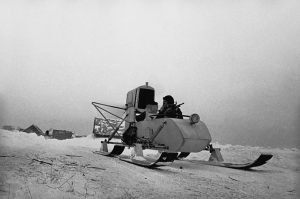
RF-8 (GAZ-98) is a self – propelled sleigh equipped with a pushing propeller engine driven by an internal combustion engine. It is a vehicle designed to travel on snow and ice. By order of the Council of People’s Commissars No. 8864rs of August 25, 1941 and by the order of the State Defense Committee No. 516ss, the OKB of the NKRF was organized(chief designer M.V. Veselovsky). The design bureau designed and built at the Plant named after October 25 the RF-6 snowmobiles. According to the test results, the snowmobiles were modified and received the name RF-8. By GKO decree No. 1057ss of December 24, 1941, the snowmobiles were accepted for serial production at the branch of the automobile plant GAZ “Bus Plant” (GZA). In various documents the snowmobiles are named: “98”, RF-8, RF-8-GAZ-98, GAZ-98, 743-98.
The invention of Russian engineers was invaluable for Russia with its grandiose spaces, where the snow cover sometimes lasts for many months. A number of remote regions of the North could have made available only such mechanical transport.
In 1942-1943, the GAZ-98K model appeared. In it, the car engine was replaced by a five-cylinder air – cooled M-11 aircraft engine with a capacity of 110 hp
Snowmobiles were most widely used in World War II , especially in 1942-1943. During this period, they were first used in significant numbers as weapons of war. The most successful snowmobiles operated in open areas: on the lake areas of lakes Ladoga, Ilmen, Seliger, frozen rivers, in the coastal areas of the sea and in the Gulf of Finland.
The experience of combat operations of aerosled units and subunits against the German troops of the same years allowed to draw some preliminary conclusions that will help to take into account the positive and negative aspects of aerosleds and get rid of errors in their use and actions.
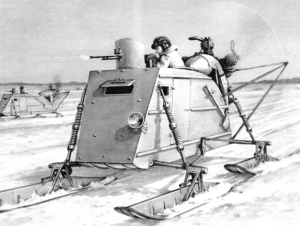
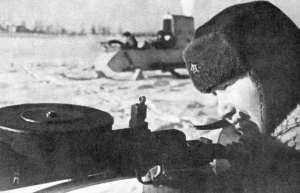
In World War II, aerosled units performed the following tasks:
Combat aerosled battalions:
- Conducted reconnaissance of the area and the enemy.
- They guarded the open flanks of combined arms and tank units.
- Carried a patrol service to protect the shores of lakes and areas not occupied by our units.
- In cooperation with ski and rifle units, they pursued the retreating enemy.
- They guarded command posts and provided communications.
Aerosled transport battalions:
- They transported units and evacuated the wounded from the battlefield.
- They brought cargo and weapons to the battlefield.
- Machine guns, mortars and anti-tank guns were towed and transported to firing positions.
- They carried a patrol service to protect areas not occupied by our units.
- Smoke screens were installed.
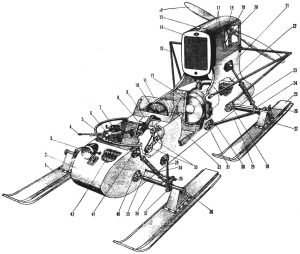
Gaz-98 Aerosled Diagram
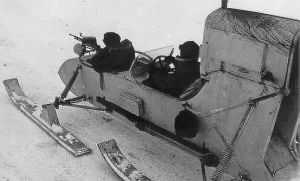
Gaz-98 Aerosled With Crew






